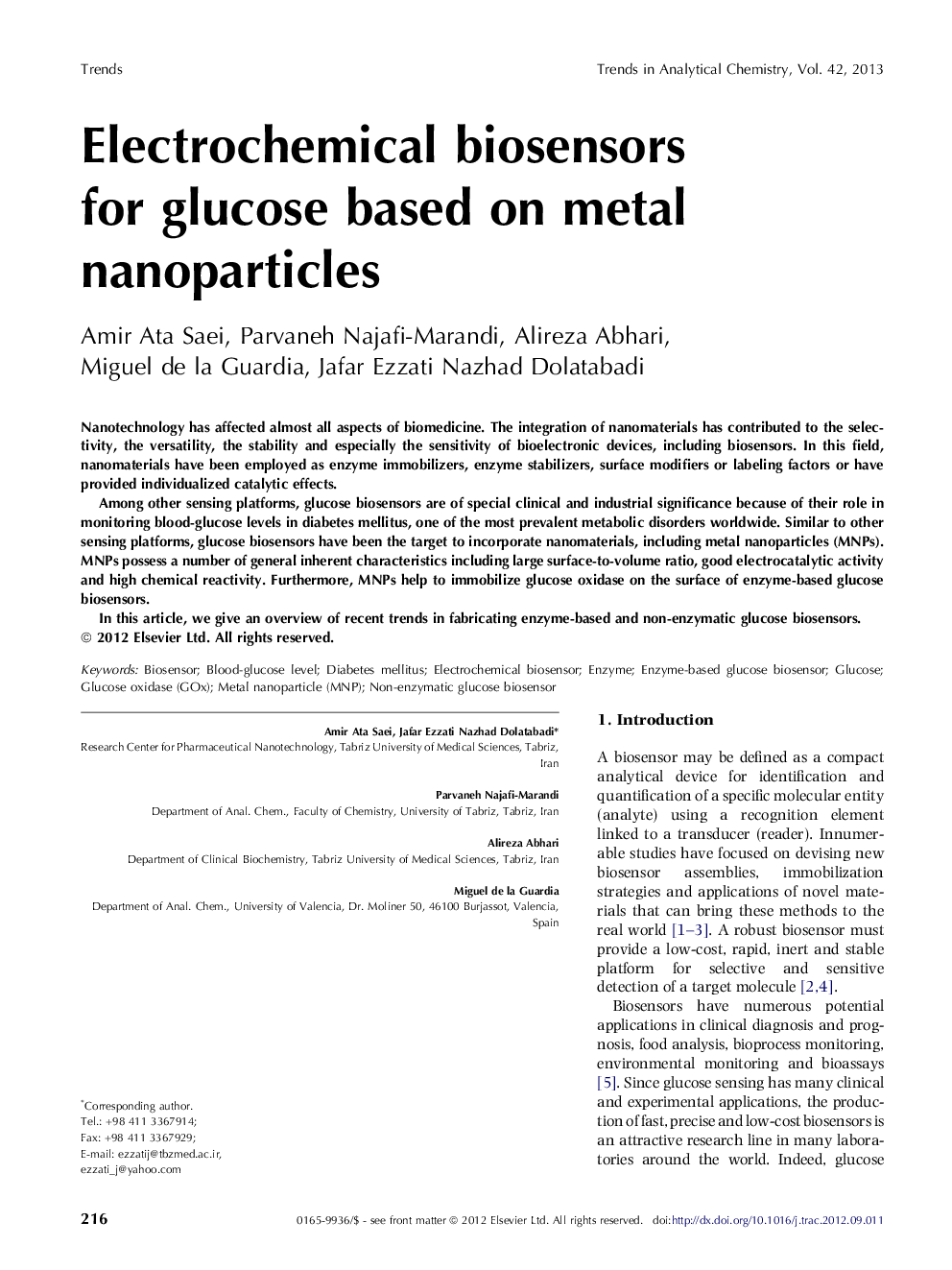| Article ID | Journal | Published Year | Pages | File Type |
|---|---|---|---|---|
| 1248006 | TrAC Trends in Analytical Chemistry | 2013 | 12 Pages |
Nanotechnology has affected almost all aspects of biomedicine. The integration of nanomaterials has contributed to the selectivity, the versatility, the stability and especially the sensitivity of bioelectronic devices, including biosensors. In this field, nanomaterials have been employed as enzyme immobilizers, enzyme stabilizers, surface modifiers or labeling factors or have provided individualized catalytic effects.Among other sensing platforms, glucose biosensors are of special clinical and industrial significance because of their role in monitoring blood-glucose levels in diabetes mellitus, one of the most prevalent metabolic disorders worldwide. Similar to other sensing platforms, glucose biosensors have been the target to incorporate nanomaterials, including metal nanoparticles (MNPs). MNPs possess a number of general inherent characteristics including large surface-to-volume ratio, good electrocatalytic activity and high chemical reactivity. Furthermore, MNPs help to immobilize glucose oxidase on the surface of enzyme-based glucose biosensors.In this article, we give an overview of recent trends in fabricating enzyme-based and non-enzymatic glucose biosensors.
► Trends in the enzyme-based and non-enzymatic glucose biosensors are reviewed. ► Glucose biosensors have incorporated Au, Pt, Ag, Fe, Zn, Cu and Pd nanoparticles. ► We also present the limits of detection of enzyme-based glucose biosensors.
